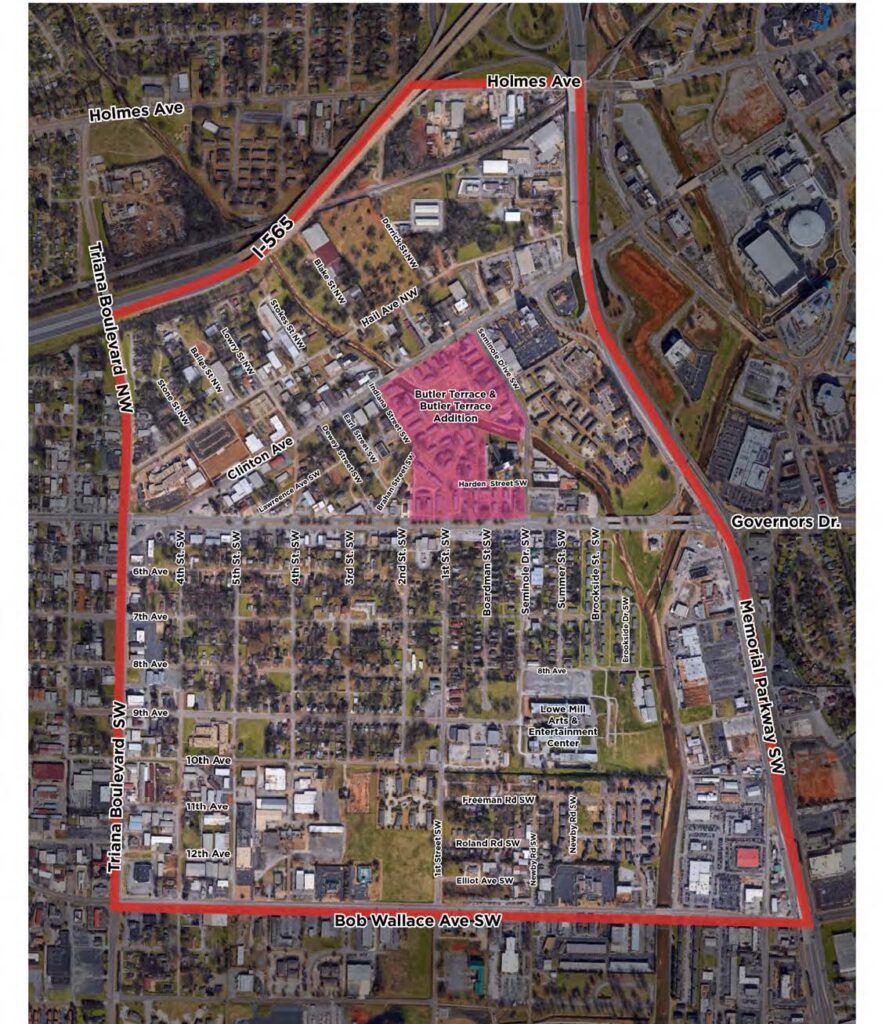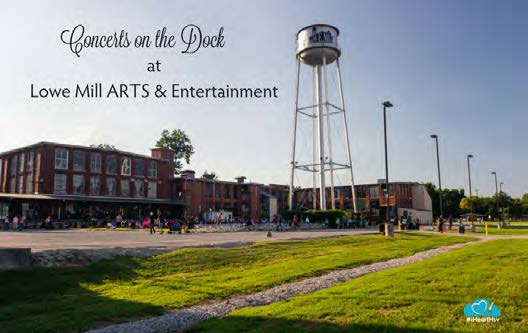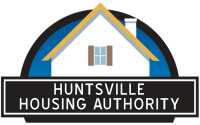This is the Huntsville Housing Authority’s revitalization plan for Butler Terrace—– to help direct the future of economic growth, campus redevelopment, and quality of life for all of our residents.
History
Butler Terrace was built in 1952 for $1.9 million and originally consisted of 170 units. This property was named for S. R. Butler, Superintendent of Huntsville Public Schools and Madison Co. Schools.
Butler Terrace Addition was built in 1953 at a cost of $.8 million and originally had 84 units. The Addition was renovated and modernized in 1982.
When HHA went to Asset Management in 2007, 50 units were moved from Butler Terrace to Butler Terrace Addition to make the sites more equal in number of units. However, most people view both sites as one property.
The Butler Terrace campus is 60 years old and in great need of a renovation.



Recent Updates
Currently all units are vacant at the Butler Terrace addition campus. The Butler Terrace Addition was deemed uninhabitable because of radon concerns. It has been empty for well over a year. Residents were given vouchers for relocation.
Plans for the revitalization of the vacated Butler Terrace Addition, which sits just west of Lowe Mill ARTS and Entertainment, are moving forward. The Huntsville City Council approved a resolution authorizing Mayor Tommy Battle to enter into a Memorandum of Agreement with the Huntsville Housing Authority (HHA) for the demolition of buildings at the site in October 2022. The area is west of Seminole Drive between Clinton Avenue and Governors Drive. The city, in a joint partnership with the Huntsville Housing Authority, will pay $200,000 as part of “tipping fees’’
Process
The HUD Choice Neighboorhoods Iniative employs a comprehensive approach to neighborhood transformation. The program helps communities transform neighborhoods by revitalizing distressed public and/or assisted housing and investing and leveraging investments in well-functioning services, high quality public schools and education programs, high quality early learning programs and services, public assets, public transportation, and improved access to jobs. The Choice Neighborhoods Initiative will ensure that current residents will be able to benefit from this transformation, by preserving affordable housing or providing residents with the choice to move to affordable and accessible housing in another existing neighborhood of opportunity.
The Choice Neighborhoods Initiative (CNI) is focused on three core goals:
- Housing: Transform distressed public and assisted housing into energy efficient, mixed-income housing that is physically
- and financially viable over the long-term;
- People: Support positive outcomes for families who live in the target development and the surrounding neighborhood,
- particularly outcomes related to residents’ health, safety, employment, mobility, and education; and
- Neighborhoods: Transform distressed, high-poverty neighborhoods into viable, mixed-income and sustainable neighborhoods
- with access to well-functioning services, high quality public schools and education programs, high quality early learning programs
- and services, public assets, public transportation, and improved access to jobs. To achieve these core goals, successful applicants
- are required to develop and implement a comprehensive neighborhood revitalization strategy, or Transformation Plan.
- This plan will become the guiding document for the revitalization of the public and/or assisted housing units, while simultaneously
- directing the transformation of the surrounding neighborhood and positive outcomes for families. To successfully develop and implement the
- Transformation Plan, the planning team will work with public and private agencies; community and philanthropic organizations; current residents
- of the Butler Terrace and Butler Terrace Addition; neighborhood residents; and other identified individuals and stakeholder groups to gather and
- leverage resources needed to support the strategic and financial sustainability of the plan.
If you would like to know more about HUD’s Choice Neighborhood Initiative: HUD Choice Neighborhood Initiative
* Huntsville is one of four cities nationwide to receive a Choice Neighborhood Planning grant. The Rocket City joined Rome, Ga.; Trenton, N.J.; and Omaha, Neb.; in receiving the award in 2019.

The future
More than 100 individuals and families were relocated and can opt to move back if they wish with a chance to “enjoy the revitalization’’ of the neighborhood. There is a 1 to 1 replacement plan for the individuals and families.
To view the Mill Creek plan visit https://millcreekchoice.com/
Project Summary
The Mill Creek neighborhood has long struggled with a high concentration of poverty and disinvestment but is well-poised
to benefit from exciting new assets and the City of Huntsville’s strong economy. For decades, the Mill Creek neighborhood’s
physical landscape has been dominated by five public housing sites that were confined to this area. Over time, a lack of typical
private-sector housing and commercial investment limited opportunities and gave way to high rates of vacancy and crime. Meanwhile,
the neighborhood had been largely disconnected from the City of Huntsville’s thriving economy, much of which is based on the
U.S. defense industry and the City’s early prominent role in the U.S. space program.
With the award of a $1,300,000 Choice Neighborhoods Planning Grant the Mill Creek community seeks to build upon the assets of the neighborhood and bridge the divide between Mill Creek and the broader city. The neighborhood stands to benefit from being a part of a city that hosts the second largest technology and research park in the nation. Mill Creek is located just west of downtown Huntsville,
making it proximate to retail, governmental centers, and health care facilities. Critically, the neighborhood is also home
to the nation’s largest privately-owned arts facility, the Lowe Mill Arts and Entertainment complex, which is located in a
former textile mill. With the opening of Lowe Mill in 2004, the area has increasingly become known as a destination for arts,
entertainment and cultural events. In addition, the neighborhood is located in a recently designated Opportunity Zone, opening
opportunities for future investment.
The City and Huntsville Housing Authority (HHA) will lead the effort to build on this momentum, developing a robust, community-based Transformation Plan. Along with a variety of critical community organizations and residents, key partners include the largest current private-sector housing investor (Invent), a leading nonprofit housing developer (Neighborhood Concepts), a historical university and anchor (Alabama A & M University), Arts Huntsville, and the First Baptist Church of Huntsville. Rather than wait on traditional development interest to shape the community, this team will take the initiative to engage a variety of leading mixed-income housing partners. By leveraging these relationships and resources with the Choice Neighborhoods Planning and Action Grant, the City and HHA will secure the required financial backing, community organizing expertise, and equitable vision to build a model mixed-income, mixed-use community.



